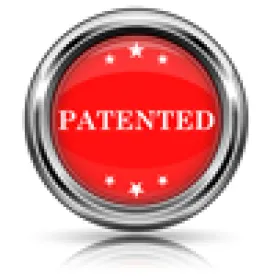In its Final Written Decision, the Board found that Petitioner had “shown by a preponderance of the evidence that claims 1-67 of the ’137 patent are unpatentable under 35 U.S.C. § 101 and unpatentable under 35 U.S.C. § 112, first paragraph, for lack of written description.”
The ’137 patent relates to “a system for remote data acquisition, and centralized processing and storage of the acquired data.” In particular, the invention of the ’137 patent provides “an automated system to manage and store captured electronic and paper transactions from various activities including banking and consumer applications.”
The Board began by addressing claim construction, stating that terms are given their plan and ordinary meaning as understood by a person of ordinary skill in the art in light of the specification. The parties did not dispute the constructions provided in the Decision on Institution, and the Board adopted the same constructions.
Next, the Board addressed Patent Owner’s argument that the Board erred in instituting trial because each claim is “directed to technological equipment and provides a solution to the transmission of financial information.” Patent Owner also argued that the method claims recite steps “performed by technological equipment.” The Board, however, was not persuaded and found that the claims “merely require the use of ‘off the shelf’ technology, including conventional imaging scanners attached to a general purpose computer network.” Thus, the Board reaffirmed its decision that the ’137 patent was a covered business method patent.
Turning to the ground of unpatentability under Section 101, Patent Owner argued that the claims do not recite an abstract idea. In particular, the Board noted that the “claims are, in substance, directed to the underlying idea of transferring information from one location to another where the transferred information is unreadable without a secret decoder key.” Patent Owner argued that unlike the ineligible algorithms in Gottschalk v. Benson, 409 U.S. 63 (1972), encryption as recited in the challenged claims is patent eligible. The Board disagreed, holding that the claims “pose a risk of unacceptable preemption as the claim language is generic in nature—referring to capturing images, managing the transaction data, collecting the data, encrypting subsystem identification information and transaction data, verifying data and transmitting data within and between a remote location and a central location.” Thus, following the analysis set forth in Mayo Collaborative Servs. v. Prometheus Labs., Inc., 132 S. Ct. 1289 (2012), the Board reviewed “the claims for an element or combination of elements that is sufficient to ensure that the patent in practice amounts to significantly more than a patent upon the ineligible concept itself.”
Patent Owner focused on the concepts of imaging and scanning recited in the claims in an attempt to “recast the identified abstract idea.” First, Patent Owner argued that because imaging and scanning documents are routine business practices, they cannot be patent ineligible. The Board disagreed, noting that the routine practices of “risk hedging (Bilski) and intermediated settlement (Alice)” were found to be abstract ideas. The Board was similarly unpersuaded by Patent Owner’s argument that the claims do not recite an abstract idea because documents and receipts are concrete objects.
Next, the Board addressed whether the claims “add anything significant to the underlying abstract idea.” As acknowledged by Patent Owner, scanning or imaging checks is a “fundamental process” and, similarly, the use of encryption is “ubiquitous.” Patent Owner also acknowledged that “the subsystems recited in the challenged claims are composed of ‘off the shelf’ technology,” but argued that the claimed “three-tier” architecture of the combined subsystems was novel. However, the Board agreed with Petitioner’s expert that even the three-tier architecture was known in the art, and that the ’137 patent merely arranged “well-known elements with each performing the same function it had been known to perform.” Thus, the Board found that the challenged claims did not add “significant meaningful limitations that transform the abstract idea into patent-eligible applications of these abstractions.”
With respect to unpatentability based on written description, Petitioner argued that the specification of the ’137 patent “fails to describe ‘encrypting subsystem identification information.’” The Board stated that based upon the four corners of the specification, “the invention must be described in a manner sufficient to demonstrate that the inventor actually invented the claimed invention.” In particular, “One shows that one is ‘in possession’ of the invention by describing the invention, with all its claimed limitations, not that which makes it obvious.” The Board agreed with Petitioner that the ’137 patent specification does not sufficiently describe encrypting “subsystem identification information,” as recited in the claims. Therefore, the Board was persuaded that the challenged claims are “unpatentable for lack of sufficient written description for encrypting subsystem identification information.”
Fidelity National Information Services, Inc. v. DataTreasury Corp., CBM2014-00020
Paper 34: Final Written Decision
Dated: April 29, 2015
Patent: 6,032,137
Before: Michael P. Tierney, William V. Saindon, and Matthew R. Clements
Written by: Tierney
Related Proceedings: DataTreasury Corp. v. Fidelity National Information Services, Inc., No. 2:13-cv-432 (E.D. Tex.)



 />i
/>i

